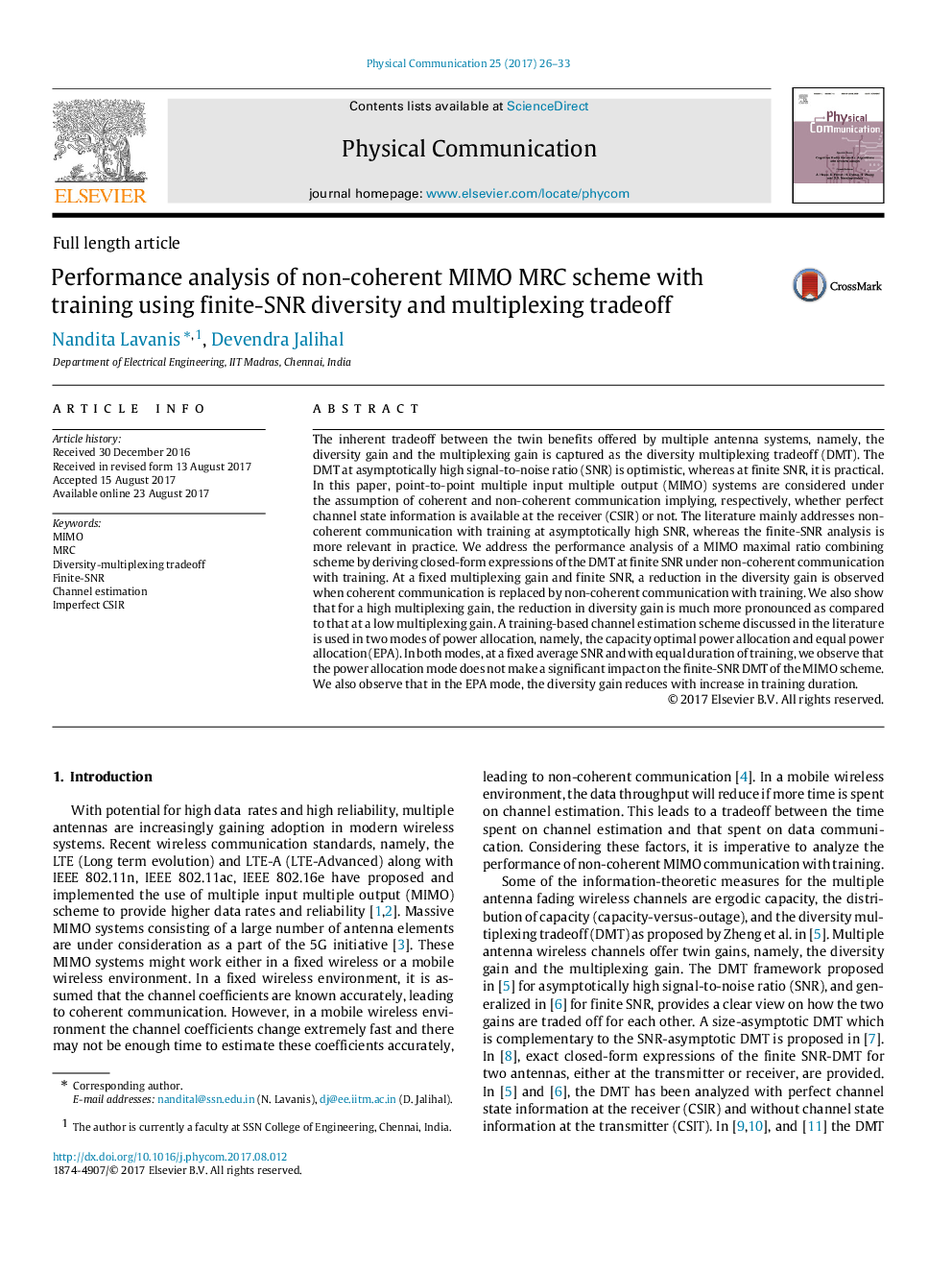| Article ID | Journal | Published Year | Pages | File Type |
|---|---|---|---|---|
| 4957582 | Physical Communication | 2017 | 8 Pages |
Abstract
The inherent tradeoff between the twin benefits offered by multiple antenna systems, namely, the diversity gain and the multiplexing gain is captured as the diversity multiplexing tradeoff (DMT). The DMT at asymptotically high signal-to-noise ratio (SNR) is optimistic, whereas at finite SNR, it is practical. In this paper, point-to-point multiple input multiple output (MIMO) systems are considered under the assumption of coherent and non-coherent communication implying, respectively, whether perfect channel state information is available at the receiver (CSIR) or not. The literature mainly addresses non-coherent communication with training at asymptotically high SNR, whereas the finite-SNR analysis is more relevant in practice. We address the performance analysis of a MIMO maximal ratio combining scheme by deriving closed-form expressions of the DMT at finite SNR under non-coherent communication with training. At a fixed multiplexing gain and finite SNR, a reduction in the diversity gain is observed when coherent communication is replaced by non-coherent communication with training. We also show that for a high multiplexing gain, the reduction in diversity gain is much more pronounced as compared to that at a low multiplexing gain. A training-based channel estimation scheme discussed in the literature is used in two modes of power allocation, namely, the capacity optimal power allocation and equal power allocation (EPA). In both modes, at a fixed average SNR and with equal duration of training, we observe that the power allocation mode does not make a significant impact on the finite-SNR DMT of the MIMO scheme. We also observe that in the EPA mode, the diversity gain reduces with increase in training duration.
Related Topics
Physical Sciences and Engineering
Computer Science
Computer Networks and Communications
Authors
Nandita Lavanis, Devendra Jalihal,
